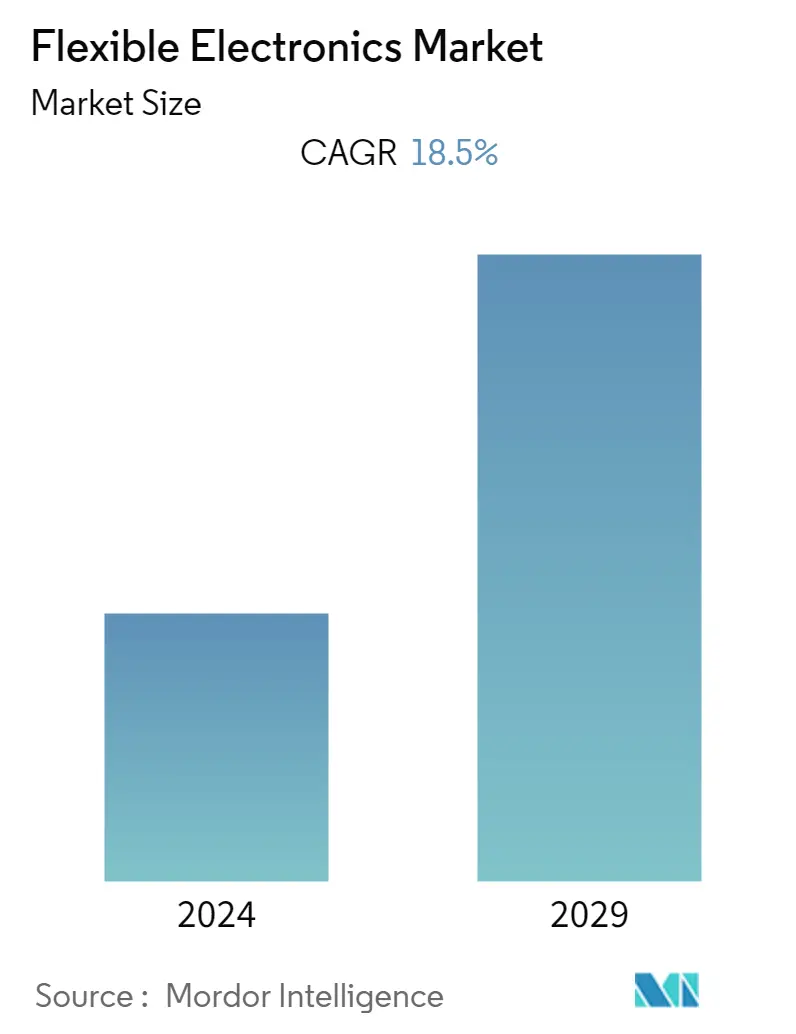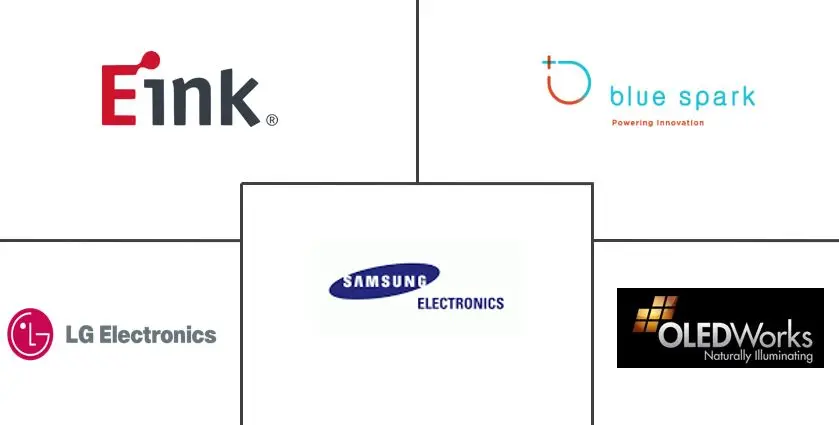Market Size of Flexible Electronics Industry

| Study Period | 2019 - 2029 |
| Base Year For Estimation | 2023 |
| CAGR | 18.50 % |
| Fastest Growing Market | North America |
| Largest Market | Asia Pacific |
| Market Concentration | Low |
Major Players
*Disclaimer: Major Players sorted in no particular order |
Need a report that reflects how COVID-19 has impacted this market and its growth?
Flexible Electronics Market Analysis
The flexible electronics market is expected to register a CAGR of 18.5% during the forecast period. Flexible electronics have gained huge popularity with the growing number of applications, including wearables. Also, the advent of flexible batteries and the growing use of flexible sensors in smart packaging and tracking applications are expected to encourage the development of the flexible electronics market throughout the forecast period.
- Moreover, in March 2021, Toppan Printing developed a flexible thin-film transistor (TFT) that can withstand million bending cycles to a 1 mm radius of curvature and demonstrates advantages for practical application, such as an on/off current ratio of at least 107 with carrier mobility of 10cm2/Vs. This is expected to gain demand for use in foldable smartphones, wearables sensors, smart packaging, medical devices, and more.
- In addition, foldable smartphones are gaining popularity in the market. For instance, in July 2022, Samsung Electronics announced its latest foldable smartphone series. The latest next-generation foldable smartphones, the Galaxy Z Flip 4 and the Galaxy Z Fold 4, were unveiled during the Galaxy Unpacked online event titled "Unfold Your World."
- Furthermore, according to BNP Media, by 2030, electronic components will account for 50% of an automobile's total production cost. Earlier this decade, it was only 30%. Progress in thin, light, and flexible electronics is behind a range of innovative technologies, from curved TVs to glucose-monitoring contact lenses. This can lead to the growth of printable solar cells and flexible screens using organic light-emitting diodes (OLEDs).
- In addition, the advancement of in-mold electronics (IME) and flexible sensors is further expanding the scope of flexible and printed electronics in smart wearable technologies. The growth of wearable devices, especially smart wearable devices, may further expand the market scope over the forecast period. Cisco estimated the number of connected wearables worldwide to surpass 900 million by 2021.
- The COVID-19 outbreak caused major delays for electronic manufacturers, as suppliers based in China struggled to keep factories running at full capacity. Many electronic manufacturers based in the United States or Europe depend on certain components built by suppliers in China. IPC, an electronic equipment trade organization, ran a survey in February 2020, in which 65% of the 150 electronic manufacturers and suppliers who participated reported delays from suppliers due to the spread of COVID-19.
